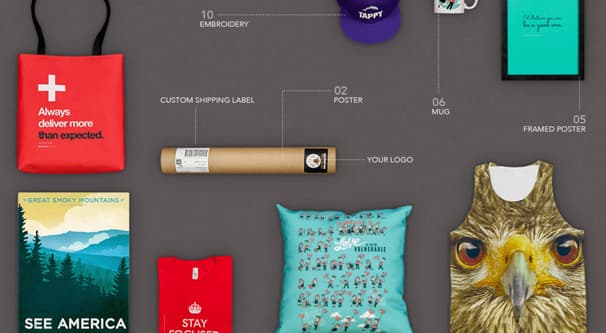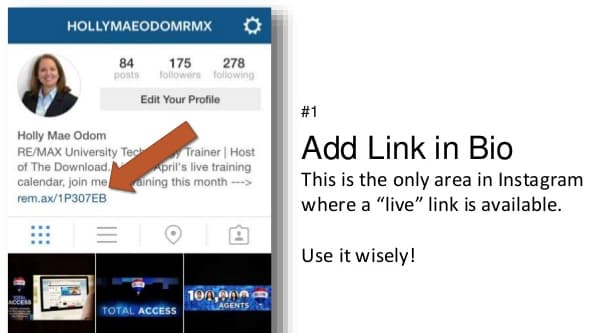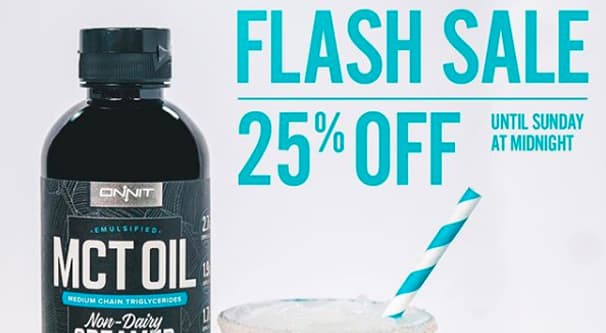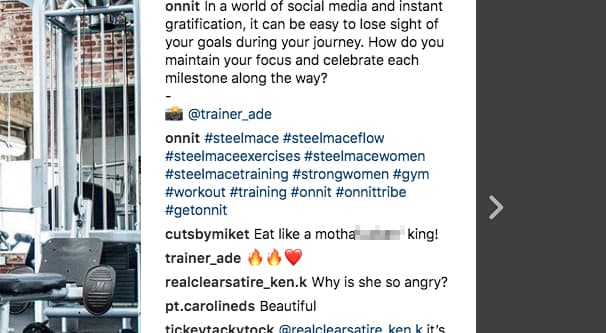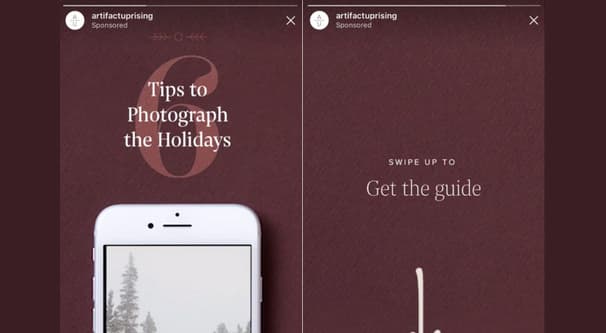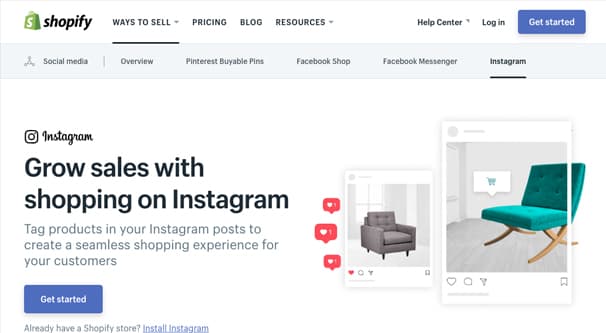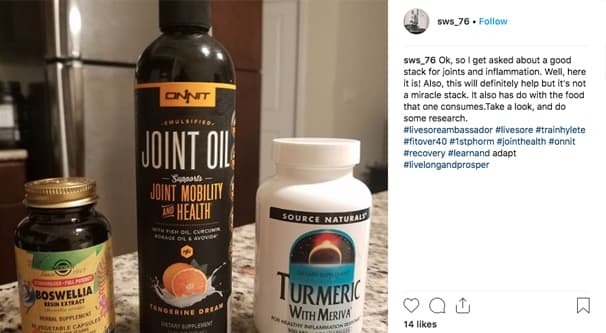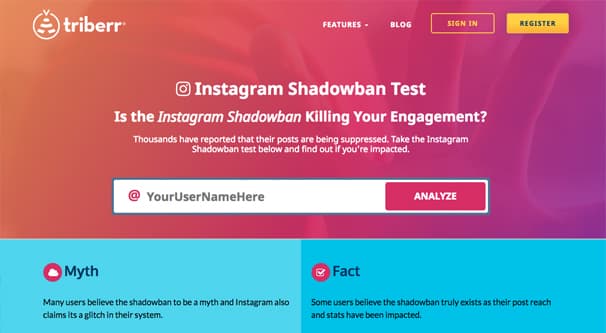Instagram is an increasingly prevalent platform amongst young millennials and gen-z folks. Both groups are well within the target customer base for anyone who sells to young adults, making Instagram an excellent platform for marketing and sales. It’s not easy to sell directly through Instagram – you need a business account and some additional tools – but you can easily use Instagram to sell indirectly, or encourage other actions that lead to sales. Here’s a compilation of tips I’ve given to anyone who asks my advice.
1. Write a CTA in Your Bio
You only have a limited amount of space in your bio, so divide it in half. Use half of it with a sentence or two about who you are, and use the rest of the space as a call to action for your shop link. On your profile, your link appears directly below your bio, so it’s a convenient way to get people to click without further delay.
2. Use a Link to a Product
One of the most common mistakes I see is using your profile link to link to your store page in general or even just a homepage. Instead, link specifically to a product landing page you’re trying to promote.
Yes, sales for other products might decline a bit, but sales for that specific product should rise dramatically.
3. Rotate Product Links Regularly
Speaking of the link in your profile, there’s no reason not to rotate it out on a regular basis. I like to use it as a deal for a specific product, time-limited, so users are encouraged to check back and see what might be on offer. Think of it like an Amazon daily deal sort of opportunity.
4. Use a Branded Profile Photo
Make sure your profile photo is a logo or something equally branded. A photo of yourself, a pet, a random flower, or something else generic won’t do much towards building a brand identity.
If you’re marketing on Instagram, you want your posts to be immediately recognizable as yours, and your profile photo is a big part of that identification.
5. Take Good Display Pictures of Products
As for your posts themselves, make sure you’re taking high quality images. It’s worth investing in either a high quality camera and the training to use it – along with image editing software and training there as well – or a photographer on payroll who can keep you supplied with images to use in your feed.
6. Take Photos of Products in Use
Your Instagram feed should include more than just product images. Sterile product images are good for store pages, but you can do so much more.
Try to get photos of your products in use, in their natural habitat. This not only shows users what your products look like in use and in scale with their surroundings, it gives them ideas and encouragement to buy.
7. Take Photos of Products Working Together
Nothing says you have to limit yourself to a single product in a given photo. One common idea I’ve seen is for apparel brands to outfit a model with five or six different items in their store, and label those items in one of a few ways that can lead to users buying those items. Show items in collections or working together for maximum interest.
8. Take Videos of Products in Action
You aren’t limited to just still photographs on Instagram. You can take videos to do some marketing for you as well. All of the same ideas as for photos apply, just make sure you’re able to take high quality video, edit it into something compelling, and share it with your audience.
9. Write Compelling Photo Captions
Your caption is one of the most important parts of your photo.
The caption should be relatively short – about as long as a tweet – and should include information about the products in the picture, the context for the picture, and any additional hashtags or information you want to include.
10. Write the Names of Specific Products in Photo Captions
Always identify the products in your images. If you’re using a business account, you can tag the individual products in the image so your users can see which is which. I like to have a plaintext description as well, complete with model numbers, so users can look up what they like. I also avoid listing prices, because prices can change dynamically while your captions cannot.
11. Offer Deals on Products You Post
What’s the difference between marketing on Instagram and marketing on Facebook, Twitter, Google Ads, or any other platform? There’s nothing inherently different, so it’s up to you to make a difference. One of the techniques I like to use is offering specific coupons, deals, or contests for Instagram users only.
You have space for something like 30 different hashtags on every photo caption.
It’s up to you if you want to use all of the space given to you – it doesn’t fit with some brands – but I encourage you to use at least a dozen of them. Come up with a branded hashtag, use hashtags for each of your products, and use some additional hashtags where relevant.
Speaking of relevant hashtags, use hashtags that related to your marketing in some way. Hashtags that relate to a holiday sale, a theme amongst your items, an ongoing trend; these kinds of options can help bring more flair to your captions and can capture a wider audience than just those who already follow you.
14. Run Ads Directly to Product Pages
Running ads on Instagram allows you to make a sponsored post guaranteed to show up in more feeds than what you might otherwise reach. It also allows you to direct people specifically where you want them, which is generally either a landing page or a product page for the specific product in question. You can also run ads to get more followers to make other ads more effective.
15. Run Story Ads
Instagram story ads are short-lived video in the same vein as SnapChat.
Put up something that takes advantage of both the video format and the temporary nature of the post to get people to convert ASAP. I like to promote a short-lived deal that users who happen to be around can claim.
16. Ask Users for Product Feedback
Not all e-commerce has to be about sales. You have a group of users who are engaged with your brand on hand, so why not ask them questions? Make the occasional post asking for feedback and use their feedback to improve aspects of your business, wherever a weakness can be found.
17. Encourage Users to Post Their Products
I like to include a little ticket with any shipped product that informs users about our Instagram account, along with a call to action to share a photo of the product in use. This kind of user generated content can go a long way towards getting others to buy, and it gets more social confidence built up for your brand.
When users submit content of your products, ask them if you can share it on your feed with the proper credit attached. If they allow it, curate the content to your feed and tag them in it. The prospect of being featured by a brand you love can get a lot of people sharing posts of their own products.
19. Use Shopify’s Shoppable Galleries
Shopify has a plugin they have been testing that allows users to shop directly from an Instagram feed.
You can read all about the plugin here. It does rely on you using Shopify for your storefront, which unfortunately will disqualify anyone invested in another storefront app.
20. Use Geographic Tagging When Relevant
A geographic tag on an image adds you to a feed for that specific geographic location. This can be very useful if you have a relevant way to take advantage of it. Just make sure not to abuse geographic tags when they aren’t relevant in any way; that can earn you a penalty for abusing hashtags.
21. Offer Promotions Only to Instagram Followers
Any time you can offer something specific to your Instagram audience, you can benefit greatly. The idea is that you’re rewarding a specific audience for following you in a specific location. These rewards don’t have to be great, but anything is better than nothing.
22. Pay for Instagram Shoutouts
On Instagram, there’s a sort of subtle black market for paid mentions in influencer feeds. There are a number of ways you can reach out to those influencers, either directly or indirectly through shoutout marketplaces. Getting an influencer to tag and mention your products can be hugely beneficial to your marketing.
23. Offer Products to Instagram Influencers
In addition to offering money for a mention, you can send new products or demo products to influencers and ask them to review or mention them in their feed.
It’s a similar prospect and can get that influencer’s followers to check out your shop.
24. Post New Content at the Right Time
Every social media audience ebbs and flows throughout the day and throughout the week. It’s up to you to do a little studying using one of the many analytics tools available. Figure out the peak hours for your audience and time your posts to be published right around those peak hours. This helps you reach more people more quickly.
25. Post New Content on a Regular Basis
General conventional wisdom indicates that it’s best to post once or twice per day, five days a week. It’s up to you to do a little studying and experimentation to figure out if that’s the most effective frequency for your audience, but you’ll generally be fine to start there.
26. Learn Who Your Audience Is and Target Them
After you’ve been running your Instagram account for a while, you will have racked up some solid information about your audience demographics. Use this to target both your organic posts and your ads, as well as guiding the future development of products for your store.
27. Reach Out to Journalists and Marketing Bloggers
If there’s one thing journalists and bloggers love, it’s case studies. If you can implement any of these techniques and record your data, you can present that data to the people who love to write about data, myself included. Our coverage can link back to your store as an example of how various techniques can bring success, and those links help build your presence and audience.
28. Avoid the Instagram Shadowban
The shadowban on Instagram comes generally when you’re using hashtags you shouldn’t be using.
Even if those tags seem benign, some benign tags were taken over by people using them as code for pornography or something equally sinister, and thus have been restricted. Always research the tags you want to use before you actually use them in a post.
29. Riff on Popular Content
If there’s something trending in your industry or in the world at large, and you can come up with a clever way to reference or rebut it, do so. This kind of in-touch content creation can humanize your brand and get people to trust and respect you just that much more.
30. Join In on Relevant Conversations
Keep an ear to the ground with social listening and other techniques to find people talking about your niche. When they post something or leave a comment that seems like a good place to chip in, leave your two cents. Again, it humanizes your brand and builds audience reputation.
